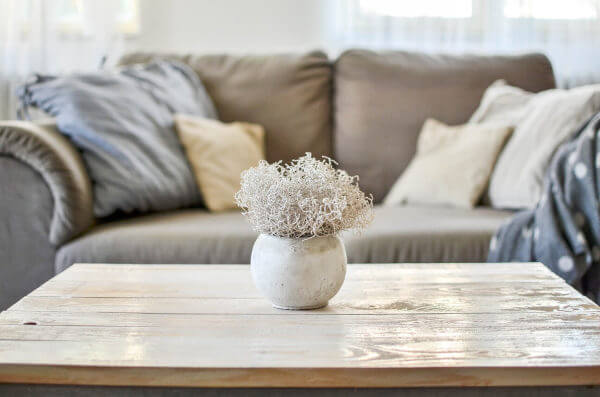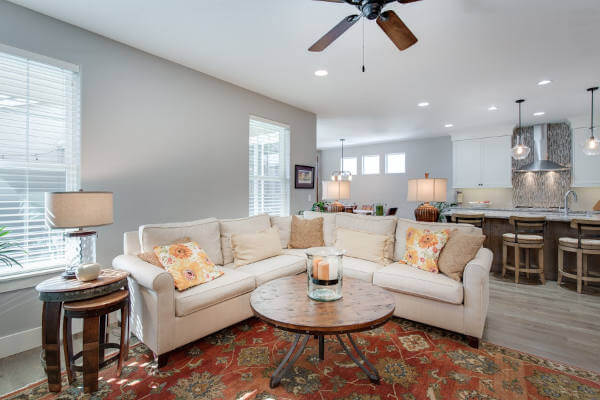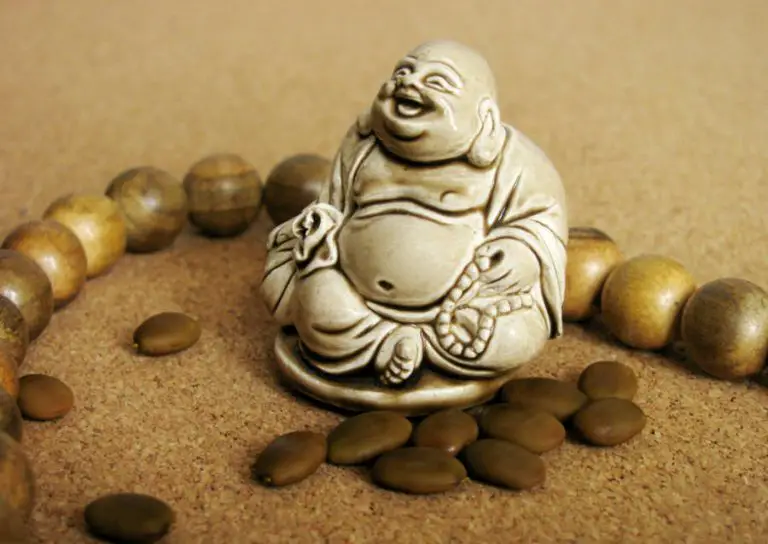How much time do you spend in your living room? Do you consider it comfortable and sufficient to entertain guests? If not, then this guide is for you. First, let us clarify a couple of things concerning living room feng shui.
The living room is not one of the three major focus areas in feng shui. These spots belong to the kitchen, the bedroom, and the front door. Therefore, any changes you make in your living room will not have a significant impact on your life and well-being.
Another thing to note is that the living room has a vastly different purpose compared to other areas of the house. It is the only room that is fully dedicated to entertaining guests. A lot of the rules and guidelines provided in this article focus on making this room better suited to this purpose.
What type of energy do you need in the living room?
Anyone looking to improve the feng shui of their home must understand the relationship between Yin and Yang energies.
Without going too in-depth, Yin energy is attributed to calmness, quietness, the moon, nighttime, and stillness. You need lots of Yin energy in your living room, but not a whole lot in other areas of the house.
The kitchen, dining room, and living room all thrive on Yang energy. We can describe Yang energy using the following attributes:
- Light (Day)
- Movement
- Open spaces
- Loudness
- Liveliness
- Energy
- Activity
There’s a lot more to learn about Yin and Yang energies. This well-written resource on the Yin Yang Theory is a good place to start.

How to feng shui your living room in 9 steps
Improving the feng shui of your living room is not a complicated process now that we’ve established the need for Yang energy in this area of the house. As we’ve noted briefly, Yang energy is strongly tied to light, movement, and open spaces. It is up to you to decide which attributes your living room lacks the most.
If nothing else, it gives you an excellent starting point, which you can break down into nine steps.
Step 1: De-Clutter
When you think about the flow of Qi around the living room, it’s best to envision the life force as flowing water. Now, look around your living room and ask yourself this: does the water flow freely throughout the space?
If your answer is no, then you’ve got your starting point. Clear any clutter in the living room to promote the smooth flow of energy around the living room. Clutter is not only bad for feng shui, but it is a significant eyesore. Guests walking into your home will feel overwhelmed and boxed in if all open spaces around them are filled with items.
Clutter also serves as a constant reminder of the hectic nature of our lives, and keeping it in the living room can affect your ability to relax fully.
Step 2: Open windows and doors to bring in fresh air
To introduce more Yang energy in your living room, you need to air it out. Opening the window not only introduces more light and energy but also clears out any stale air in the living room.
You should make a habit of airing out your living room to get rid of any negative energies floating around and to welcome positive energy from the universe. Aerating the living room also has numerous benefits, including reducing allergens, increasing alertness, and boosting mood.
Step 3: Consult your Bagua energy map
Looking at the positioning of your house using a Bagua energy map allows you to note where the nine areas of life lie in your home. If it’s your first time implementing a feng shui layout, then it’s important to learn about this as well as the important feng shui elements.
The Bagua map directs you to place items and elements in places that attract benevolence from the universe. With it, you’ll know exactly how to design your living room to boost Yang energy.
Step 4: Balance the elements
Earth, fire, wood, water, and metal are the five elements of feng shui. As important as it is to create a balance among these elements, whether with items made from these elements or by positioning items in the favored element’s direction, you should be aware that they cancel out all too often.
For instance, wood destroys the earth, and water cancels out fire. Placing these elements in the proximity of each other could negate the desired effect.
Feng Shui Diploma Course
- Certified Course
- Accredited Course
COURSE INFORMATION
- 10 Modules
- Lifetime Access
- Study Group Access
Use “LIGHTWARRIORSLEGION466 ” code for 70% off.
Step 5: Assess the commanding position
Just like the bedroom has the bed, or the kitchen has the stove, the living room’s commanding position is the sofa. The commanding position allows you to see entryways leading to and from the living room. Ideally, the commanding sofa should be the centerpiece of the room. However, there’s no harm in making the coffee table the centerpiece, especially if you and your guests spend a lot of time around it.
Step 6: Use colors for feng shui symbolism
Colors come in handy when you’re unable to harness the directional energies in your home. In feng shui, they are highly symbolic, something that you are encouraged to take advantage of in the living room.
Brighter colors give the room more light. Furthermore, you can invite various elements into your space using corresponding colors such as white for metal, blue for water, and green for wood.
Step 7: Invest in artwork.
The living room is one of the best places to mount artwork (the hallway is another one), but you should be extra careful about what you portray.
While there’s nothing wrong with having plain walls, artwork can tie a room together, give it a theme, or just inject more luck into the atmosphere. We’ll touch on lucky feng shui symbols later on.
Step 8: Nurture plant life
Plants add loads of wood energy to your home. In the living room, this is very desirable. Wood symbolizes growth and expansion. Potted plants don’t just boost the aesthetics of the room; they also attract more social connections, thereby growing your social and familial network.
Step 9: Make all areas of the room accessible.
The way you position your furniture in the living room determines how accessible it is. You should strive to create walkways around the furniture such that it is easy to access all areas of the living room.
You don’t want to feel like you’re walking long distances just to get to a specific point. Making everywhere accessible makes the living room feel much more comfortable.
Related reading: Using the Elephant Symbol in Feng Shui – Opens in new tab

Feng shui rules for living room location
It should be near the front entrance.
The living room should be the first room to greet you when you enter the house. If you walked into a house and were immediately greeted by a kitchen, or worse, a bedroom, you’d feel uncomfortable, like you were invading the host’s privacy.
That’s why it makes sense for the living room to be close to the door. Since it thrives on Yang energy, it is safe for inviting guests and an ideal location for lively movement, activity, and conversation.
It should be at the front of the house.
Since its main purpose is to welcome you and any guests you may have, the living room should always be at the front of the house. It is the same feng shui concept of having the bedroom at the back of the house to protect it from too much Yang energy.
It should be in an auspicious location.
Unlike the washroom and the kitchen, the living room should be in an auspicious (fortune-inviting) location in the house. You spend a lot of time in this room, so it makes sense that it should draw good fortunes to you, your family members, and your guests.
Related Reading: Eighteen Things that Bring Luck to Your Home According to Feng Shui–Opens in new tab
Feng shui rules for living room design
It shouldn’t have more than four corners.
Irregular-shaped living rooms are associated with complications in your social life. If you want to attract people who are virtuous or, in other words, mainstream, you’ll have greater chances with a rectangular or square-shaped living room.
The ceiling shouldn’t be low or slanted.
Low ceilings always make us afraid of bumping our heads even when they’re nowhere near us. A low ceiling will create nervous energy and affect your ability to relax. The invisible pressure it creates leads to discomfort and makes the room smaller and less pleasant to be in.
Slanted ceilings pose the same problems in the lower sections. You should generally prefer high ceilings because they create extra space, attract more light, and symbolize room to grow.
A good living room has windows and receives lots of natural light.
Living rooms need light and air more than anything else. This is a problem that can only be remedied by windows. They improve the circulation of air, light, and Qi, which is why the more you have, the better.
Windowless rooms often feel depressing and mildly intimidating. They can make people shy away from human interaction.
Having a balcony is a bonus.
Balconies are like huge windows, especially when they have sliding glass doors. With a balcony, you can attract more Qi from outside and encourage its circulation around the house. Balconies also improve social connections. In particular, they attract people who are likely to help you in your career, relationship, or health.
🍀 Our “Feng Shui Master” app is your trusted companion, offering a useful guide to implementing Feng Shui principles. Try it now!

Feng shui rules for living room furniture
At least one sofa should have the command position.
The sofa should ideally be placed in front of a wall. That eliminates walkways outside your line of sight, which can make you nervous and unable to relax. It should allow you to see the main entryways from whichever angle you’re seated.
Support sofas with large furniture when wall placement isn’t feasible
If you can’t place it next to the wall, or would rather isolate it as an island, then give it something to lean on. A heavy or large piece of furniture should have the same effect as placing a wall behind it.
The sofa shouldn’t align with the front door.
It is bad feng shui to align the sofa with the front door. If you can walk straight from the front entrance and run into the sofa, then it may not be the best position. If you can’t place it elsewhere, consider putting a buffer of some sort (could be furniture, plants, etc.) between the sofa and the door.
Pick a favorite sofa to be the “master sofa.”
The master sofa is the host’s seat, a rule that’s unspoken but universally known. Delegating one seat for this role makes it easier for your guests to settle in because they feel welcome to all the other seating positions and do not feel like they’re intruding in your home.
Don’t place the sofa under a beam.
Beams and walkways have the same effect: they create nervous energy. No one can relax with something heavy looming above them or without full awareness of their most vulnerable position.
If you can’t avoid beams, use buffers like houseplants to counteract the negative Xa energy they emanate. Alternatively, you can use rarely placed furniture like wine cabinets and shelves in these areas.
Ensure there’s an unobstructed flow of movement (and Qi) around the living room
Arrange your furniture in a way that promotes easy movement of both the occupants and Qi energy around the house. There has to be a flow to it, a simple yet seamless arrangement that allows you to almost glide your way around the room.
Conclusion
One thing that you shouldn’t forget throughout the process is this: it is wiser to be practical first, then ritually correct. Whatever adjustments you make, focus on convenience and efficiency first before referring to the feng shui guidelines.
If there are conflicts in furniture placement, think about why you’re re-arranging in the first place. Maybe positioning the sofa in an auspicious location places it directly under a beam. In such a scenario, it is more important to seek stability and peace before growth.
As a center for entertaining guests and relaxing, your living room has slightly different feng shui requirements, which we’ve covered in-depth in this guide. Remember, to experience bigger changes in your life using feng shui, focus on how to improve the feng shui in your bedroom, kitchen, and around the front door.
Here are some of the most popular feng shui rules, organized by room, from our other articles.
- Feng Shui Rules and Tips for Your Front Door and its Surroundings
- Best Feng Shui Rules and Tips for the Living Room
- Basic Feng Shui Rules and Tips for Dining Room
- Basic Feng Shui Rules and Tips for Kitchen
- Basic Feng Shui Rules and Tips for the Bedroom
- How to Feng Shui Your Bathroom
- Basic Feng Shui Rules and Tips for Staircases and How to Apply them
- Simple Guide to Feng Shui Your Workspace
- Feng Shui Your Garden: Design Your Dream Garden with Feng Shui Principles
- Feng Shui Your Baby’s Room for Optimal Well-being
Take a look at some Feng Shui product ideas – Aff.link
Stay in Touch
 Join our newsletter by using the forms on this website or click here!
Join our newsletter by using the forms on this website or click here! Follow us on Google News
Follow us on Google News Follow us on Facebook
Follow us on Facebook
Featured image by tungnguyen0905 from pixabay






